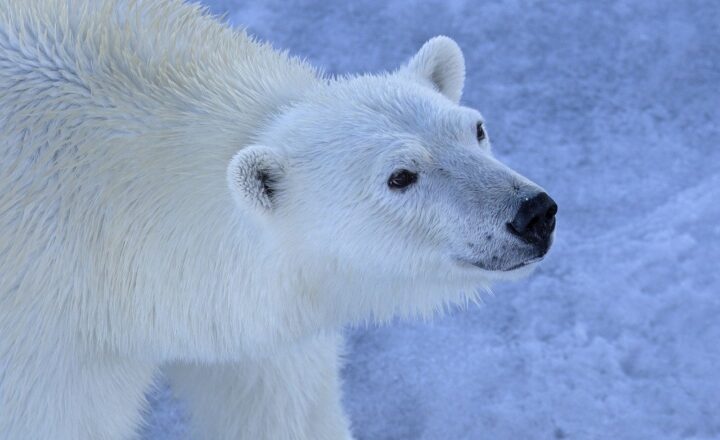Exploring Wildlife Conservation: What You Can Do to Make a Difference
November 19, 2024

Wildlife conservation is more critical now than ever. As human populations grow and development expands, many species face existential threats including habitat loss, poaching, and climate change. The importance of preserving our biodiversity is not just a concern for environmentalists but for everyone who recognizes the value of a balanced ecosystem. In this article, we’ll explore the pressing issues in wildlife conservation, how they affect you and future generations, and the steps you can take to make a difference.
1. The Importance of Wildlife Conservation
Wildlife conservation is essential for multiple reasons:
- Biodiversity and Ecosystem Health: Healthy ecosystems rely on a diverse range of species. Each organism plays a role in its habitat—such as pollination, seed dispersal, and food web dynamics—which contributes to the overall health and function of the planet.
- Economic Value: Many countries depend on wildlife-related tourism for economic stability. Activities like eco-tourism create jobs and generate revenue while encouraging conservation efforts. Protecting wildlife can also boost agriculture by maintaining healthy populations of pollinators and pest controllers.
- Cultural Significance: Wildlife holds deep cultural importance for many communities. Traditional knowledge often intersects with biodiversity, influencing diets, spiritual beliefs, and practices that have been passed down through generations.
- Scientific Discovery: The more we study wildlife, the more we learn about health, resistance, and adaptation. Nature has a wealth of knowledge that can lead to discoveries in medicine, technology, and sustainability.
It is clear that the loss of species can have widespread implications for people, environments, and economies. The persistence of wildlife is intertwined with our well-being, making conservation a universal concern.
2. Current Threats to Wildlife
Understanding the key threats to wildlife can empower you to take action:
- Habitat Loss: Urbanization, agriculture, and deforestation are leading causes of habitat destruction. As habitats are fragmented, species lose their homes, leading to declining populations.
- Poaching and Illegal Wildlife Trade: Many species are hunted for their body parts, a practice that has caused dramatic declines in populations. This includes ivory from elephants, furs from big cats, and exotic pets.
- Climate Change: Rapid climate change poses threats through extreme weather, shifting habitats, and changes in food availability. Many species cannot adapt quickly enough to these alterations, leading to extinction.
- Invasive Species: Non-native species can disrupt ecosystems by outcompeting or preying on native species, leading to declines or extinctions.
Each of these threats not only impacts wildlife but also reflects broader environmental issues that affect us all. It is a call to arms for every individual to contribute solutions for conservation.
3. Ways You Can Help Wildlife Conservation
You might wonder, “What can I do to make a difference?” Here are several actionable steps:
- Educate Yourself and Others: The first step is awareness. Read articles, explore documentaries, and participate in community discussions about wildlife conservation. Share this knowledge with friends and family to create a greater collective understanding.
- Support Conservation Organizations: Contribute your time or financial resources to organizations focused on wildlife preservation. Many groups work on the ground to protect endangered species and their habitats and can always use support.
- Practice Responsible Tourism: If you travel, choose eco-friendly destinations and activities that support local wildlife conservation efforts. Avoid tourist traps that exploit animals or degrade their habitats.
- Advocate for Policies: Use your voice to advocate for policies that protect wildlife and their habitats. This could involve writing to officials, signing petitions, or joining campaigns that push for stronger conservation laws.
- Make Sustainable Choices: Reduce your carbon footprint by recycling, limiting plastic use, and supporting products that are sustainably sourced. This minimizes habitat degradation and pollution, ultimately benefiting wildlife.
- Volunteer: Find local non-profits focused on wildlife rescue, rehabilitation, or climate action. Your time can make a huge difference in communities addressing these issues directly.
Every action, no matter how small, contributes to larger efforts in wildlife conservation. By integrating these practices into your lifestyle, you can help create a more sustainable future for wildlife.
4. The Role of Technology in Wildlife Conservation
Recent advancements in technology have profoundly impacted wildlife conservation:
- Drones for Monitoring: Drones are used for surveillance and monitoring of wildlife populations and habitats. They allow researchers to gather data and identify poaching activities without disturbing wildlife.
- Camera Traps: Remote camera traps help track elusive species and gather data on behaviors and population sizes. They are essential for research and monitoring conservation efforts.
- Geographic Information Systems (GIS): GIS technology aids in mapping habitats, assessing land use, and analyzing environmental impacts. This information helps conservationists make informed decisions about land management.
- Mobile Apps for Reporting: Various mobile applications empower citizens to report wildlife sightings and suspicious activities, aiding organizations in their monitoring efforts.
This technology represents a leap forward in wildlife conservation, allowing for better-informed strategies to protect our planet’s valuable species and habitats.
5. Conclusion: Every Action Counts
In conclusion, the preservation of wildlife is not just the role of biologists and environmentalists; it requires collective action from individuals, communities, and governments. We all share the responsibility of ensuring that future generations can enjoy the rich diversity of life found on our planet.
Educating yourself and others, supporting conservation initiatives, and making informed lifestyle choices are steps that contribute significantly to these efforts. The good news is that every action counts, and together, our combined efforts can transform the future for wildlife. Start with small steps, and remember, the path to conservation is paved with purpose and passion. By embracing this commitment, you can truly make a difference in wildlife conservation and contribute to a sustainable future.






